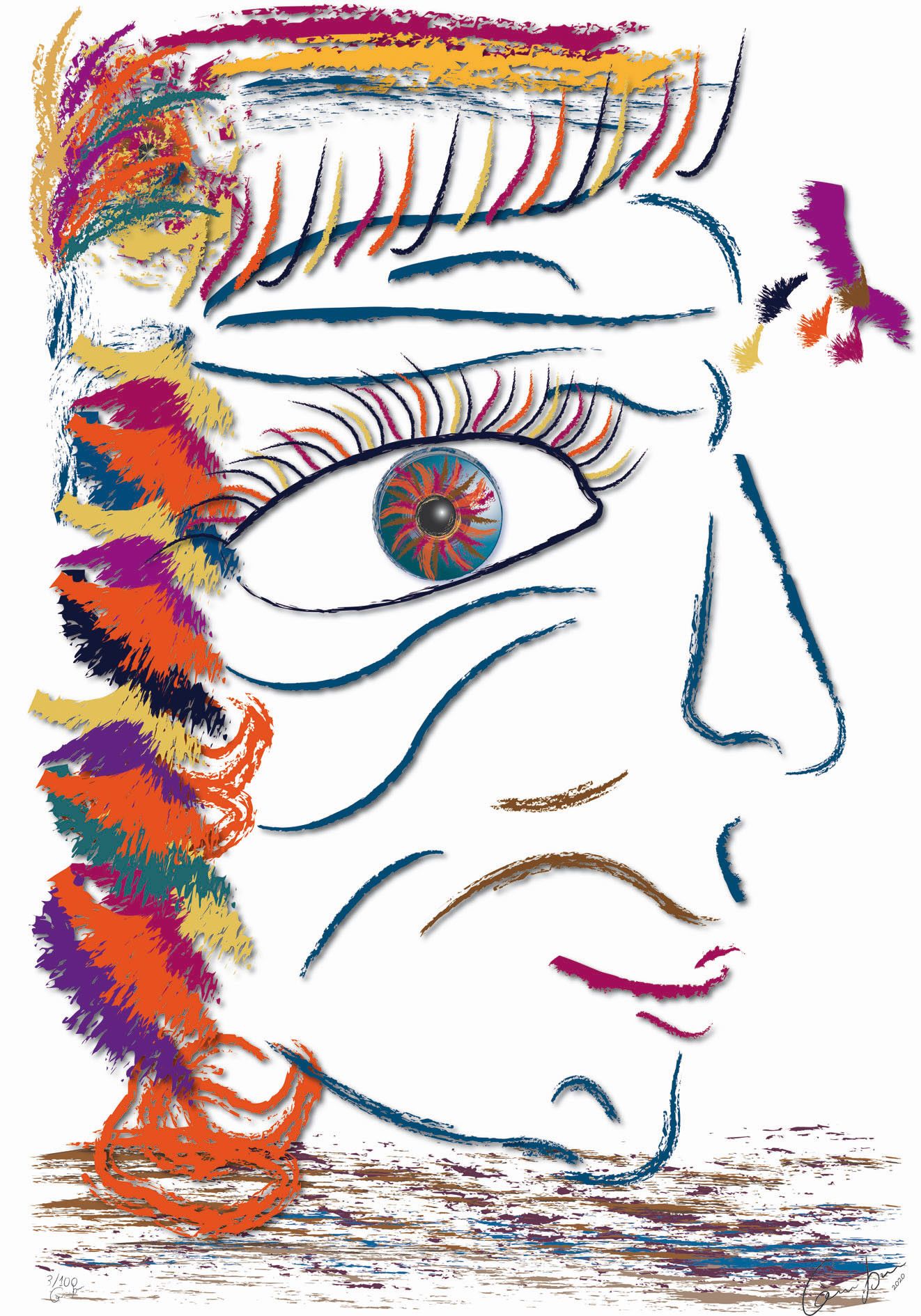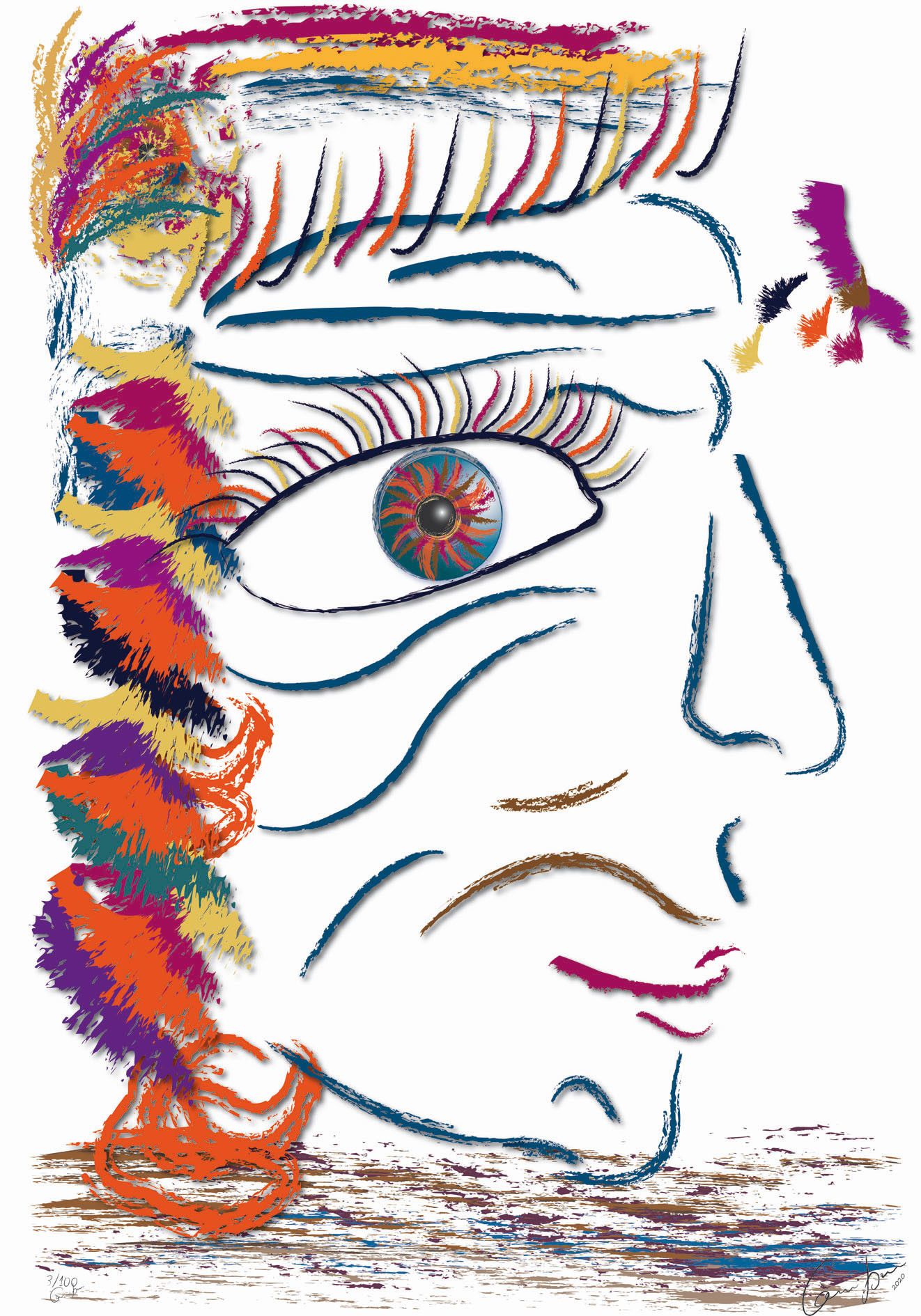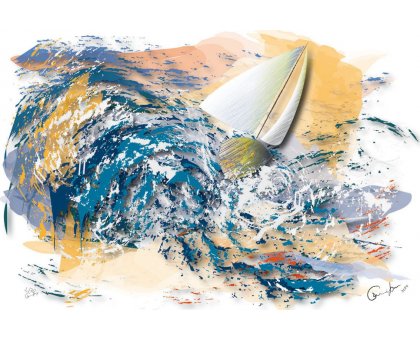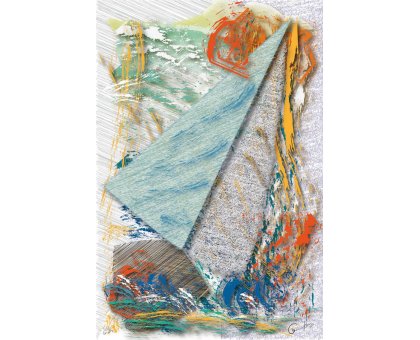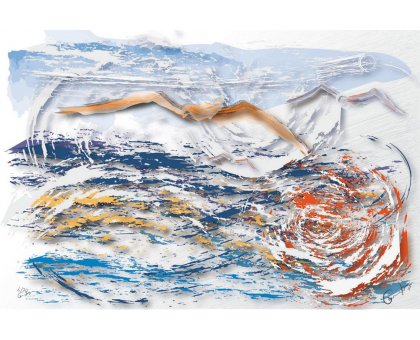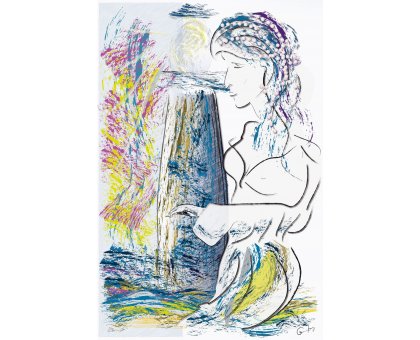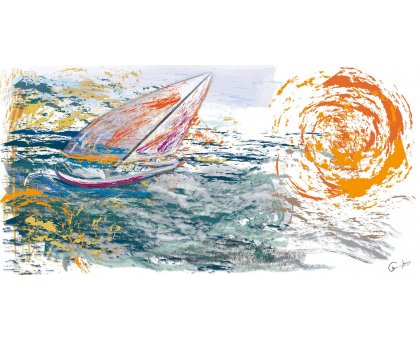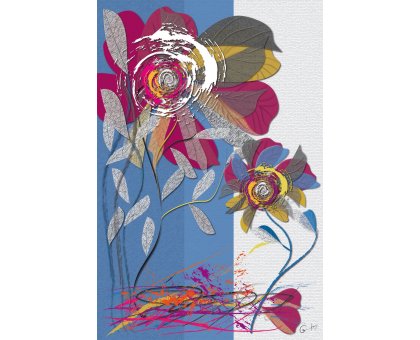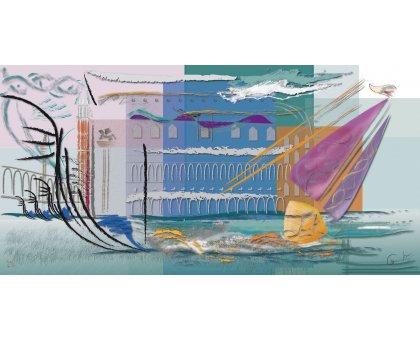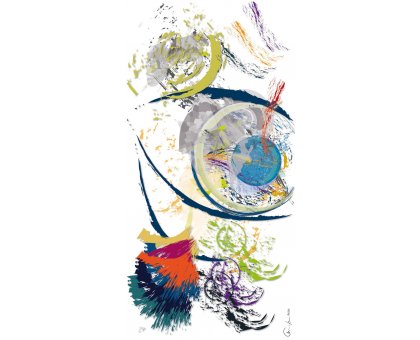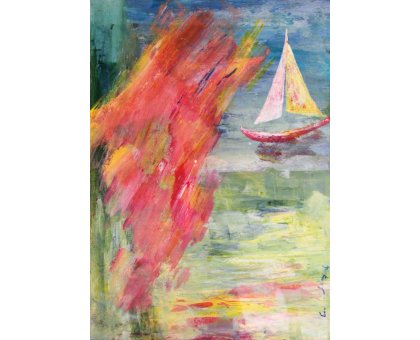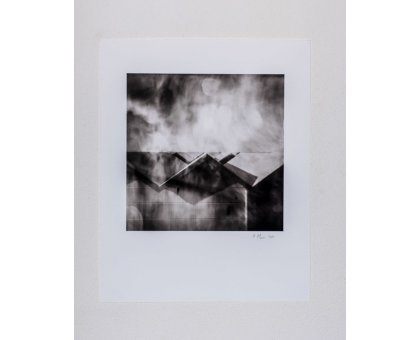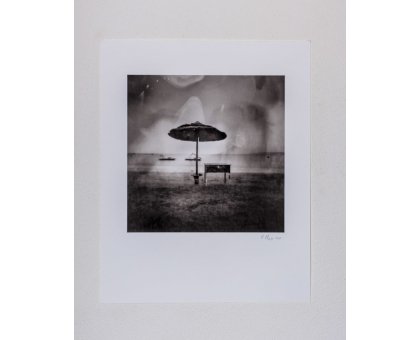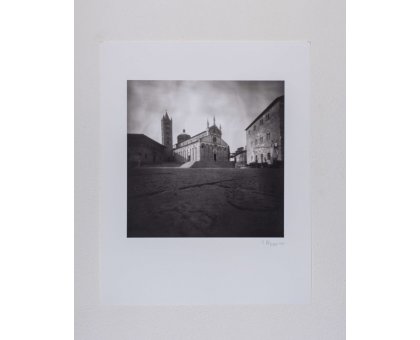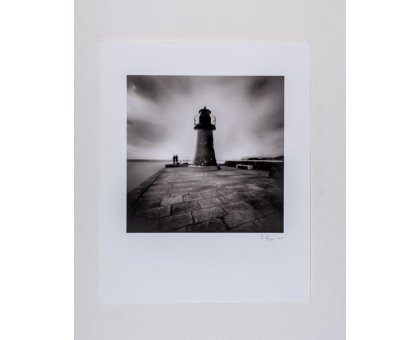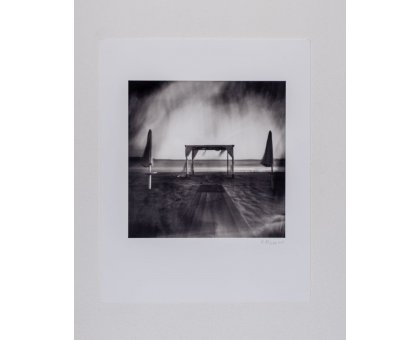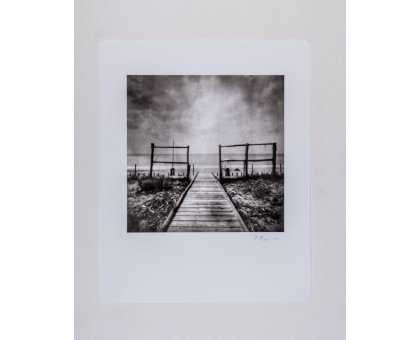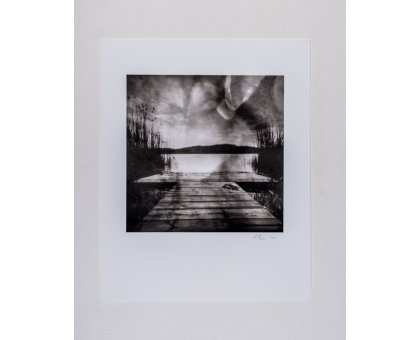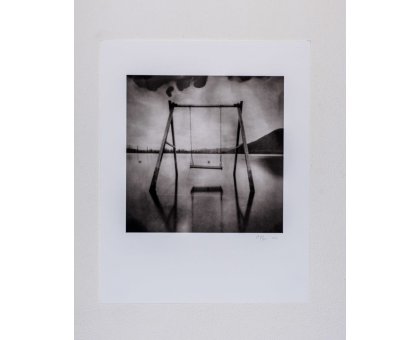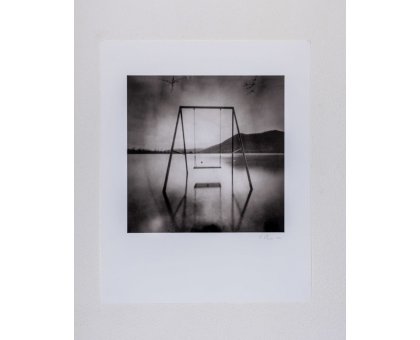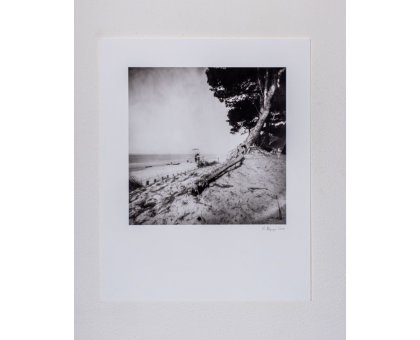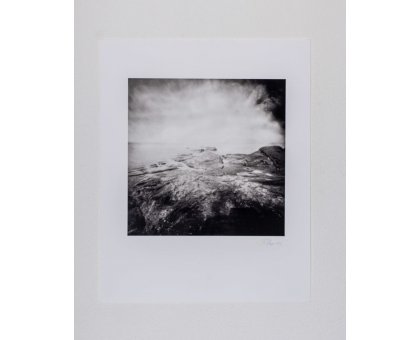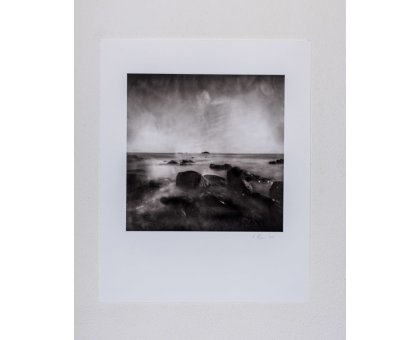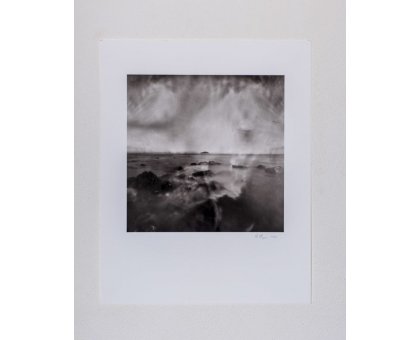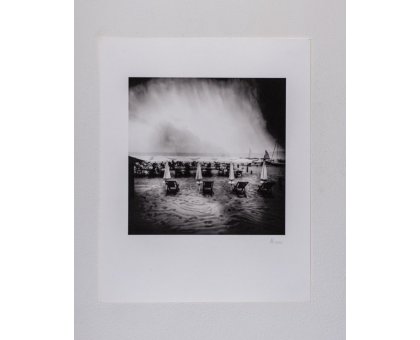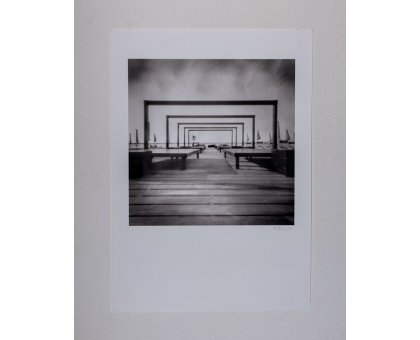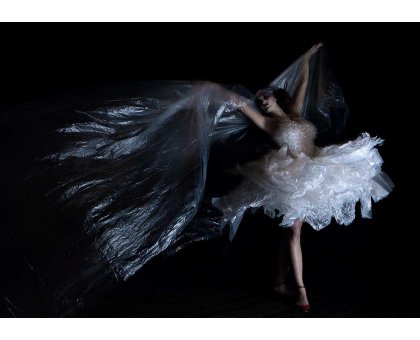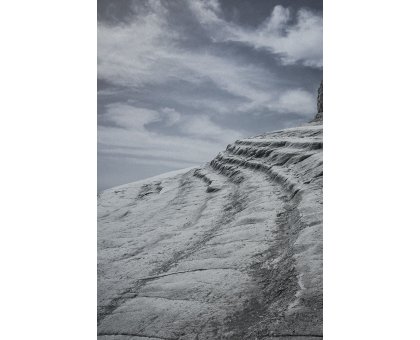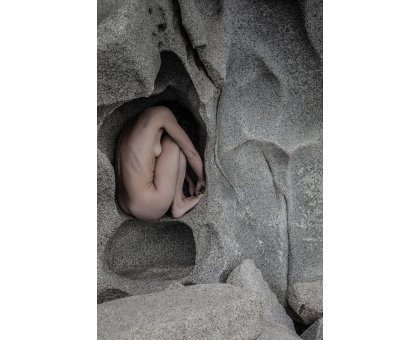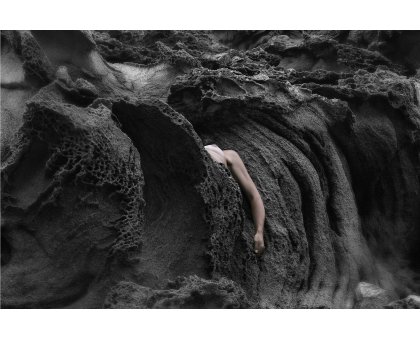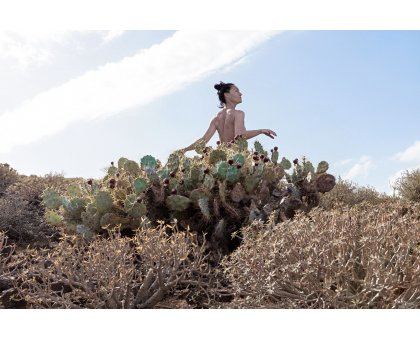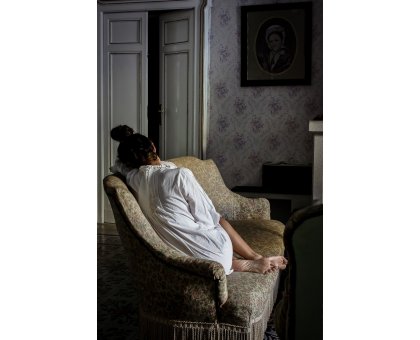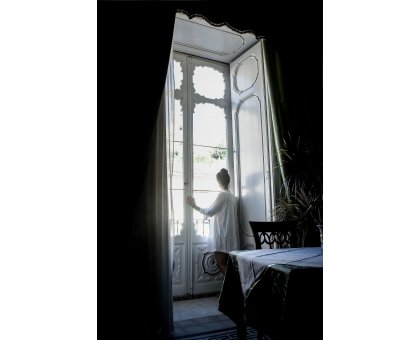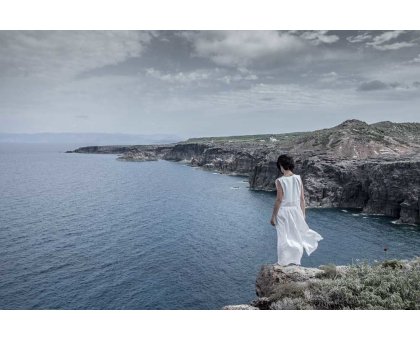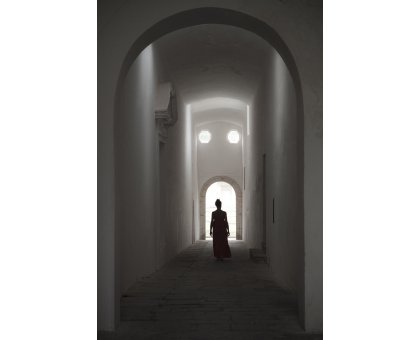Description: DIGITAL PAINTING CAMILLO BUCCELLA ' NAGUAL ' size L 70 x H 100 cm.
Digital Painting - Titolo " Nagual " by Camillo Buccella .
From the NAGUAL - Visionary Art Collection 2020 series.
Limited edition N ° / F (3/80).
Direct print on Forex - High resolution UV.
Year 2020 - Size L 70 x H 100 cm.
Multiple artwork - Certificate of authenticity.
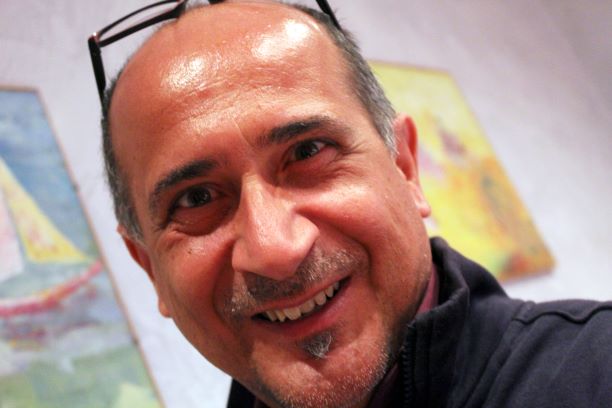
Camillo Buccella
Graduated from the "G. Marconi "in Pescara, he attended the three years of Human and Pedagogical Sciences at the Faculty of Studies of L 'Aquila, specializing in Special Didactics and School Inclusion. He has dedicated a large part of his working life to advertising consultancy, on behalf of A. Manzoni & C. Spa - Advertising concessionaire of the GEDI Group - Editoriale L 'Espresso - La Repubblica. He trained as an advertising graphic designer at the High School of Education - InfoBasic School in Pescara.
Among the founding members of the Artistic-socio-cultural Association PIETRE & BORGHI d 'Abruzzo, he participated and shared various projects and events related to the Abruzzo region. He currently teaches, on behalf of the Ministry of Education, in the State Primary School, also dedicating much of his free time to artistic activity. The interest in graphic, pictorial and visual arts, in fact, has always accompanied his training and personal research. Furthermore, his passion for travel and offshore navigation led him to move and sail in the Mediterranean and the Atlantic, enriching his imaginative baggage which, now, finds space in his own artistic creations. In particular, trips to the Caribbean Islands, Martinique, to discover the routes of "Colombo", the exploration of the Mayan and Aztec sites of Mexico and Guatemala, gave him the opportunity to live unique experiences and explore new places; to meet people, learn about populations, cultures and atmospheres that have enriched his imaginal potential. In particular, the contact with the indigenous peoples of Central America, whose shamanic rites are still present in their popular culture, the approach to the literary work of Carlos Castaneda, such as "The teachings of Don Juan" and "L'Arte of Sognare ", have strengthened in him the idea of the conception of art as a" vision "that is an" intuitive and direct "interpretation of reality that is reworked, as in a non-ordinary state of consciousness, and returned by the artist in the work in the form of "Visionary Art".
In his current experimentation, the artist has focused his attention mainly on digital production. In fact, he wanted to deepen the use of digital painting techniques and tools for the creation of paintings that combine his previous experience in digital graphics with the inputs of some artistic traditions of the figurative arts. His spontaneous predilection for post-impressionist and historical avant-garde currents, especially Wassilj Kandinskij's Abstractionism, and Joan Miró's Surrealism, certainly influenced his expressive style: every sensorial and emotional datum, for the artist , can be traced back to visual perception and is expressed in the re-elaboration of color which, combined with the graphic gesture, as in a "dream vision", lets any fixity of reality fall to make room for new "visionary" perspectives. In the operational phase, the graphic gesture is a prompting of his creations.
In fact, the first sign of him, mostly instinctive, allows him to start his own idea of representation and then imprint others that, consequentially and in a spontaneous and harmonious way, connote the final restitution. In the compositional order, however, he considers the figurative element not prevailing over the chromatic one. The iconic elements, in fact, in their creations are only hinted at with sometimes indistinct features, performing, in every way, their function of scaffolding the entire creation. In the organization of spaces, moreover, he prefers asymmetries that allow him to give the overall vision that sense of precariousness and movement that is indispensable for the artist, sometimes venturing up to "chaos". He often uses pattern elements such as lines, shapes and colors to convey the overall rhythm of the composition. The color element, however, is what distinguishes his expressive predominance. His perceptive approach to reality is fundamentally visuo-chromatic. He visually perceives reality as an unexplored objective color datum that contains within it a myriad of emotional-sensorial potentials, apparently unexpressed. Our creative, in fact, basically understands visual art as "color maieutics" that is an artistic representation that has, as a function and perspective, the ability to return to the observer the image perceived, intuitively by the artist, initially broken down and recomposed in all its multiple chromatic possibilities.
And it is precisely the possibility of working simultaneously or in asynchronous mode, on several levels (levels), offered by digital graphics, which allows him to easily explore this area of expressive-creative experience.
